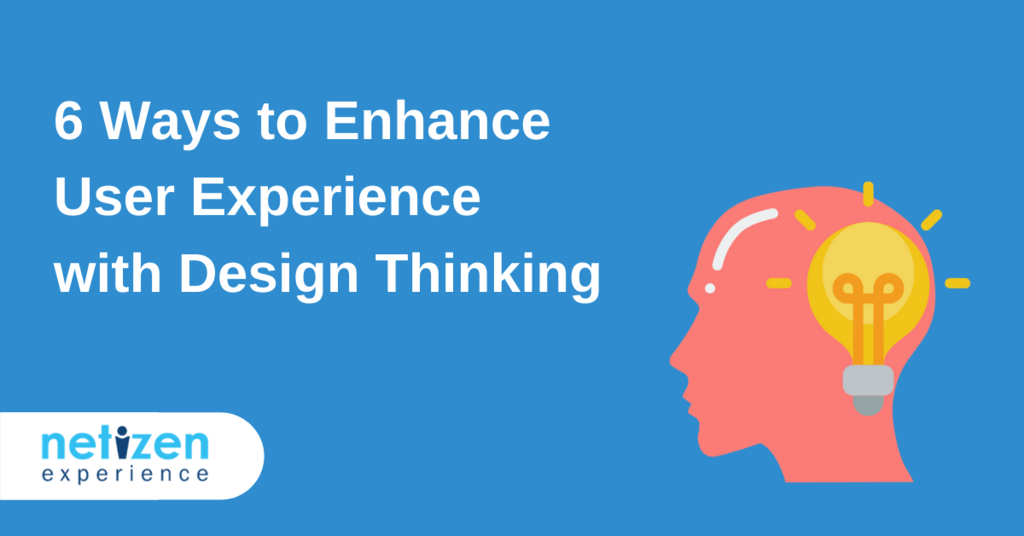User experience (UX) is vital, offering customers a pleasant and positive user experience and incentivises them to be a returning customer. One of the ways of improving user experience is for businesses to incorporate design thinking into their product and services development.
In this Article
What is Design Thinking?
Design thinking is an iterative process revolving around a deep interest in understanding the user, and challenging assumptions in order to develop empathy with the target users. This is especially useful in tackling unknown problems, and re-framing the problem to be customer-centric.
There are several variants of Design Thinking, ranging from 3 to 7 phases but all the variants are similar in embodying the same principles that were set forth by Nobel Prize laureate Herbert Simon.
The 5 phases of Design Thinking are:
- Empathise with your users
- Define your users’ needs and problems
- Ideate by challenging your assumptions and to create ideas for innovative, customer-centric solutions
- Prototype to create solutions
- Test solutions
The phases above doesn’t always need to be sequential, it’s more of an overview of phases for an innovative project. The 5 phases above are taken from Hasso-Plattner Institute of Design at Stanford, also known as d.school.
The application of design thinking whereby companies focus on preempting their customers’ demands in order to provide them with innovative solutions results in a remarkable user experience.
Here are 6 ways in which design thinking can enhance your user experience:
1. Empathise with your customers, put them first.
Empathy sets businesses apart, it can be as simple as thinking of customer service from your customers’ point of view. Yet many businesses fail to do so. Make it a point to put your customers first, invest in customer journey research in order to identify opportunities & pain points for improvement. Let empathy, not profit, guide your decision making.
Empathetic design thinking helps your business understand customers’ mindset, therefore aids in creating a product that is sure to help your users.
2. Look Through Your Customers’ Eyes
In line with empathising with your customers, it’s also important to shift your perspective to that of the customer. By looking at things through the eyes of your customers, it opens up so many problems that would have gone unnoticed.
Being able to see problems that are experienced by customers provides your business with the ability to identify customer-centric solutions. For example, some businesses conduct usability testing to see how their customers actually use their website or conduct shadowing to see how their customers experience their physical store service.
3. Look At Problems In New Ways
Incorporating design thinking helps teams step outside of the comfort zone and think outside the box. Instead of thinking of typical assumptions, design thinking forces teams to look at problems in new ways.
Without being boxed in by the current limitations, the team is able to explore new ways of looking at problems, and be able to truly empathise with the users to build products and services that are customer-centric. This method of looking at problems in new ways helps to deliver a pleasant user experience.
In addition, design thinking also helps avoid designing solutions around the existing organisational structure by looking at problems in new ways.
4. Forget About Outdated Assumptions
Design thinking forces businesses to ditch outdated assumptions about what their customers need or want. Assumptions are so easy to make and they tend to stick around so easily into the team’s psyche that it’s almost a habit that needs to be kicked.
Design thinking revolves around challenging assumptions and understanding the user. A great way to understand the user is through user research such as user interviews that provide in-depth information to users’ pain points and their needs.
Users’ expectations are higher than ever, and one of the ways in which businesses can stay in line with users’ expectations is to provide a personalized experience. In order to do so, an in-depth understanding of users is crucial in delivering a great user experience that fits the users’ needs.
5. User-Friendly User Experience
A great user experience is the golden goal but let us not forget the very basics of user experience: being user friendly.
One of the most important considerations in design thinking is making sure that your user experience is as user-friendly as possible, this means thinking about how things can be handled in a quick manner, and as easily and painlessly as possible.
How do you know if your user experience is user-friendly enough? You can do so by conducting usability testing research with your users. Doing so will allow a full analysis as to whether your user experience is user-friendly enough, what areas need improvement and how it can be improved to make the experience more user-friendly.
6. Creating Useful Interactions
User experience needs not only to be user-friendly but also useful. You wouldn’t want your users to think: “What is this doing here? It isn’t useful at all. If this company puts so little thought into the usefulness of their website, what does that say about the usefulness of their product?”
Your website conveys all the information for your company, therefore it is important to have a user-friendly experience that is useful to your customers.
Design thinking helps you consider how useful the interactions really are. Regardless of the type of interaction, the user will be less willing to engage in something that is useless to them as it provides little to no value.
Conclusion
In summary, design thinking is a way that challenges team thinking and accepted norms. In a digital world where technology, user expectations and possibilities are changing at mind-boggling speed, it’s never been more important to apply design thinking to enhance your user experience.

